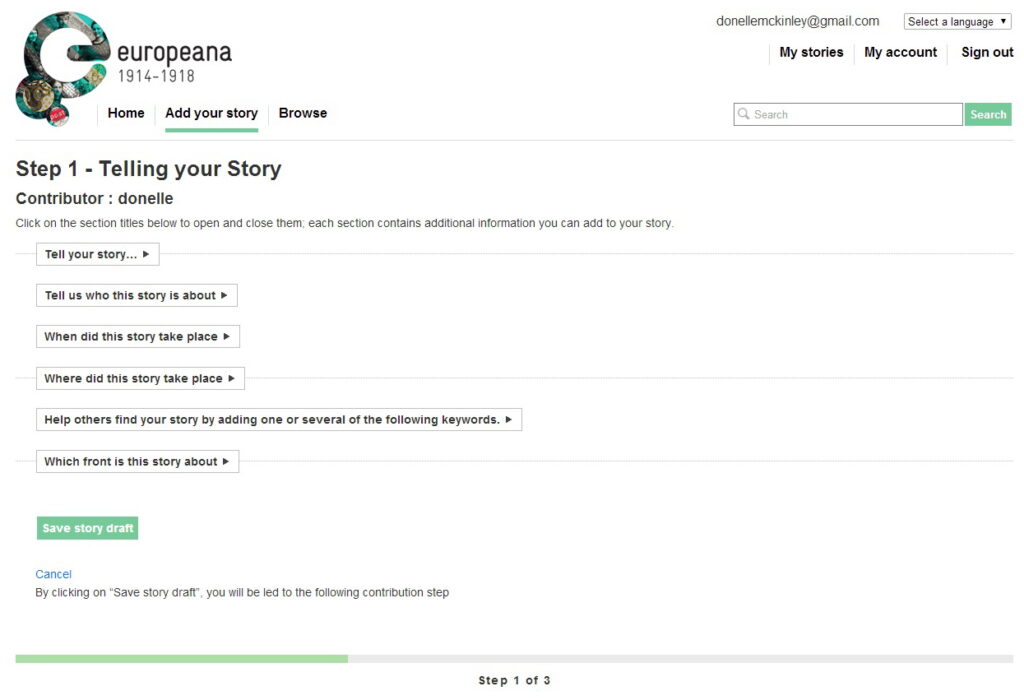Websites for crowdsourcing cultural heritage support participation by minimizing the effort to contribute.
Explanation: Websites should minimize the necessity for users to provide the same information more than once, and not demand excessive effort when tasks could be achieved more efficiently by the system.
Benefits: Enabling users to perform tasks effectively and efficiently encourages new users to continue contributing, and established users to make large and/or frequent contributions.
Examples of compliance with this principle:
- Allowing users to contribute without registering, making registration optional, or simplifying registration/login by incorporating existing user accounts for web applications such as Google, Twitter or Facebook.
- Prioritizing components of the task and allowing contributions to meet minimal requirements.
- Auto-save functionality.
- Automatic completion of data fields based on previous contributions.
- Automatically directing users to the next step of the task.
- Enabling users to save and return to their work in a new session.
Examples of non-compliance:
- An unintuitive sequence of interaction, and confusing or interrupted workflows.
- Absence of the interactive functionality users need and expect, such as image magnification.
- Requiring excessive effort to successfully manipulate digitized text or images.
- Unclear or difficult input formats.

